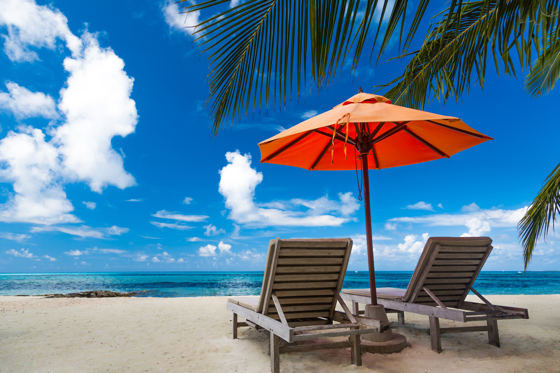For hotels and resorts, Instagram remains a dynamic, fast-past channel which needs constant scrutiny but which still offers great returns and insight, alongside boosted brand awareness. Even in these reduced occupancy days, there’s no shortage of marketing strategies to flip through.
A hotel’s marketing team often starts small by working the right hashtags and posting perfectly-posed photos to get in front of the right audience. Hosting travel influencers and celebrities is typically the next step to spreading the word and making content (this was much easier to do pre-pandemic when influencers were actually traveling, of course.)
All the while, hotels are diligently attempting to understand the app’s mysterious algorithm, particularly with regards to placement in the “Explore” section, and are also paying for sponsored stories or posts, which is probably the most effective option.
But another strategy has emerged—paying for placement on popular Instagram accounts, putting the hotel in front of hundreds of thousands, sometimes millions of potential guests, beyond the hotel’s own account reach.

The most well-known of these accounts is @BeautifulHotels which has more than three million followers worldwide and which averages many thousands of likes and hundreds of comments for each post. The account is a part of the Beautiful Destinations company, a full-service travel marketing and media company. In short, they do the marketing work for you from their own heavily-followed account.
Another smaller, more curated account is @AccidentallyWesAnderson which has more than one million followers. The account features extremely likeable photographs of real places that match the quirky aesthetic of filmmaker Wes Anderson (of “Grand Budapest Hotel.”) Unlike Beautiful Hotels, Accidentally Wes Anderson is submissions-only, although they have worked with tourism boards on occasion.
Yet while having a spot in the grid of a major Instagram account is a thrill, it might not necessarily deliver the desired results.
“Placements in accounts like Beautiful Destinations are valuable for a burst of new followers, but I’m not sure about the ROI in terms of deeper engagement,” said Nick Papa, digital director for RHC, a hospitality communications firm which handles social media marketing for the Greydon House on Nantucket, among others. “Their 3.8M followers love hotels, but I don’t know if they’ll necessarily be interested in my client’s hotel.”
For Greydon House, Papa opted to look for opportunities outside of travel. “My thinking is to reach our audience where they are, and it’s more likely they’re shopping online, for example, than planning a trip right now,” he said. Papa partnered the hotel with Tuckernuck, a Nantucket-inspired apparel company for a series of content on Instagram Stories and the hotel blog.
“Although Tuckernuck’s followers don’t expect travel content, we gained 100 followers overnight and saw social media referral traffic to our website increase 700% over last February,” Papa said.
Theo Holloway, vice president of digital marketing at Remington Hotels, a Dallas-based hospitality management company, and a member of HSMAI, said turning to the Instagram accounts of local guides in feeder cities has proved to be a viable strategy, especially as they deal with limited marketing budgets and paused media spends.
Remington Hotels tested this small-account strategy in a few markets where they had hotels and which were in driving distance such as Dallas and Austin.
“The upside is that some sites performed very well,” Holloway said. “Others didn’t produce anything trackable but we have identified the sites we want to continue to work with.”
Since these accounts were also looking for new content to fill their feeds, Remington had full control of the messaging and there wasn’t any creative pushback, although Holloway said Remington picked accounts that were already very aligned with the branding of their properties.
At Davidson Hospitality Group, their hotels and restaurants are encouraged to do what is best to reach their target demographic, which for much of the portfolio means working with smaller accounts and influencers.
“We definitely see potential engaging macro influencers on paid opportunities when it comes to high profile assets in gateway markets,” said Patricia Davis, senior vice president of marketing and communications for Davidson Hospitality Group. “But so far, we have found great success strategically targeting influencers with highly engaged, like-minded audiences and facilitating in-kind agreements.”
Working with individual influencers, of course, does have some barriers when it comes to results analysis compared to paid placements. “We view influencer partnerships as PR opportunities which are harder to track,” Holloway said. “We don’t see the direct returns in a way that we do with these types of local accounts where we have much more feedback about the production and audience engagement.”
For some properties, simply sticking to great content is all the marketing they need. At Mauna Lani, an Auberge Resorts Collection hotel which recently reopened after extensive renovations, they’ve eschewed paid placements in favor of an organic strategy, focused on storytelling from the resort to like-minded followers.
“We have worked with travel partners on joint Instagram Lives, and have partnered with media on Instagram takeovers,” said Chris White, vice president of brand experiences. “While we haven’t ruled out larger partnerships to help grow our audience, we have found success in partnering with influencers and travel advisors with similar audiences.”
